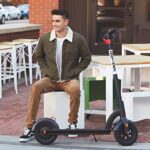The Chrysler Pacifica has long been a popular choice for families seeking a versatile and spacious minivan. Introduced initially in 2017 as a replacement for the Chrysler Town and Country, the Pacifica platform also underpins the Chrysler Voyager, available to fleet buyers since 2020. For families considering the 2022 Pacifica, safety is paramount. Let’s delve into the crucial safety aspects, drawing insights from rigorous crash testing.
Understanding the Small Overlap Frontal Test
Crash tests are essential for evaluating vehicle safety, and the small overlap frontal test is one of the most demanding. This test simulates a collision where only a small portion of the vehicle’s front end (specifically, 25%) on the driver’s side strikes a rigid barrier. It’s designed to assess how well the car protects occupants in offset frontal crashes, a common type of serious accident. The test focuses on the vehicle’s structure, safety cage integrity, and the effectiveness of restraints in minimizing driver injury.
2017 Chrysler Pacifica Crash Test Performance: A Benchmark for the 2022 Model
While this report references tests conducted on the 2017 Chrysler Pacifica, it’s highly relevant for understanding the safety performance of subsequent models like the 2022 Pacifica. It’s important to note that Chrysler made critical structural improvements to the Pacifica after initial tests revealed an issue with the driver door hinge in models built before August 2016. The ratings discussed here apply specifically to Pacifica models built after August 2016, and these enhancements are carried forward in later models.
In the small overlap frontal test, the 2017 Chrysler Pacifica achieved impressive results, setting a strong precedent for the 2022 Pacifica safety standards.
Action shot from the 2017 Chrysler Pacifica driver-side small overlap frontal crash test, highlighting the vehicle’s structural integrity.
The evaluation criteria and ratings from the test provide a detailed breakdown of the Pacifica’s performance:
| Evaluation criteria | Rating |
|---|---|
| Overall Evaluation | Good (G) |
| Structure and safety cage | Acceptable (A) |
| Driver injury measures | |
| Head/neck | Good (G) |
| Chest | Good (G) |
| Hip/thigh | Good (G) |
| Lower leg/foot | Good (G) |
| Driver restraints and dummy kinematics | Good (G) |
These ratings indicate a high level of protection for the driver in a small overlap frontal crash. “Good” ratings signify the highest level of safety performance in these evaluations.
Driver Survival Space and Restraint Systems
Post-crash analysis provides further valuable insights. The dummy’s position relative to the vehicle’s interior components is crucial.
Post-crash dummy position in the 2017 Chrysler Pacifica test, showing good maintenance of driver survival space.
The test results showed that the driver’s survival space was “maintained reasonably well.” This means the structural design of the 2022 Pacifica (and similar models) effectively resists intrusion into the occupant compartment, crucial for preventing serious injuries.
Furthermore, the frontal and side curtain airbags played a vital role in protecting the driver’s head.
Deployment of frontal and side curtain airbags in the Chrysler Pacifica crash test, effectively protecting the driver’s head.
These airbags “worked well together to keep the head from coming close to any stiff structure or outside objects that could cause injury,” demonstrating the effectiveness of the 2022 Pacifica‘s advanced restraint systems.
Lower Leg and Foot Protection
Protection of the lower extremities is another critical aspect of crash safety.
Assessment of driver space maintenance and lower leg/foot injury risk in the 2017 Chrysler Pacifica crash test.
The test results for the 2017 Pacifica indicated that “risk of injuries to the dummy’s legs and feet was low,” suggesting robust design features in the 2022 Pacifica to mitigate injuries in this vulnerable area.
Technical Measurements: Intrusion and Injury Data
Detailed technical measurements from the crash test offer a deeper understanding of the structural performance and potential injury risks. Key measurements include occupant compartment intrusion and driver injury metrics.
Measures of occupant compartment intrusion on driver side
| Evaluation criteria | Measurement |
|---|---|
| Lower occupant compartment | |
| Lower hinge pillar max (cm) | 12 |
| Footrest (cm) | 14 |
| Left toepan (cm) | 11 |
| Brake pedal (cm) | 5 |
| Rocker panel lateral average (cm) | 4 |
| Upper occupant compartment | |
| Steering column | 2 |
| Upper hinge pillar max (cm) | 7 |
| Upper dash (cm) | 8 |
| Lower instrument panel (cm) | 9 |
These measurements quantify the extent of deformation in the occupant compartment, demonstrating the structural response to the crash forces.
Driver injury measures
| Evaluation criteria | Measurement |
|---|---|
| Head | |
| HIC-15 | 71 |
| Peak gs at hard contact | no contact |
| Neck | |
| Tension (kN) | 0.8 |
| Extension bending moment (Nm) | 8 |
| Maximum Nij | 0.18 |
| Chest maximum compression (mm) | 20 |
| Femur (kN) | |
| Left | 1.2 |
| Right | 0.8 |
| Knee displacement (mm) | |
| Left | 2 |
| Right | 1 |
| Knee-thigh-hip injury risk (%) | |
| Left | 0 |
| Right | 0 |
| Maximum tibia index | |
| Left | 0.73 |
| Right | 0.31 |
| Tibia axial force (kN) | |
| Left | 2.2 |
| Right | 1.7 |
| Foot acceleration (g) | |
| Left | 45 |
| Right | 28 |
These injury measures, such as HIC (Head Injury Criterion), neck tension, chest compression, and femur forces, are all within acceptable limits, reinforcing the “Good” driver injury ratings.
Conclusion: The 2022 Pacifica – A Safe Choice for Families
Based on the robust performance in demanding crash tests, the Chrysler Pacifica, including the 2022 Pacifica model, stands out as a safe and reliable minivan for families. The structural enhancements and effective restraint systems contribute to a high level of occupant protection in frontal crashes. For families prioritizing safety, the 2022 Pacifica is a compelling option, offering peace of mind and proven crashworthiness.

